How To Draw A Person Lying Down On Their Back
Everyone has a favorite sleeping position; some like to doze off on their side while others prefer to dream face down on their mattress. Regardless of how you sleep, your sleeping position can have a great impact on your quality of sleep and health.
While back sleeping is not the most popular position (only about eight percent of people prefer this pose), it does reap the most benefits. From relieving sinuses to even increasing your beauty sleep, the list goes on.
However, it can be hard to switch up your sleeping position, especially if you find any other sleeping pose uncomfortable. If you're a stomach or side sleeper and want to learn how to sleep on your back, follow the steps below.
1. Choose a Supportive Mattress
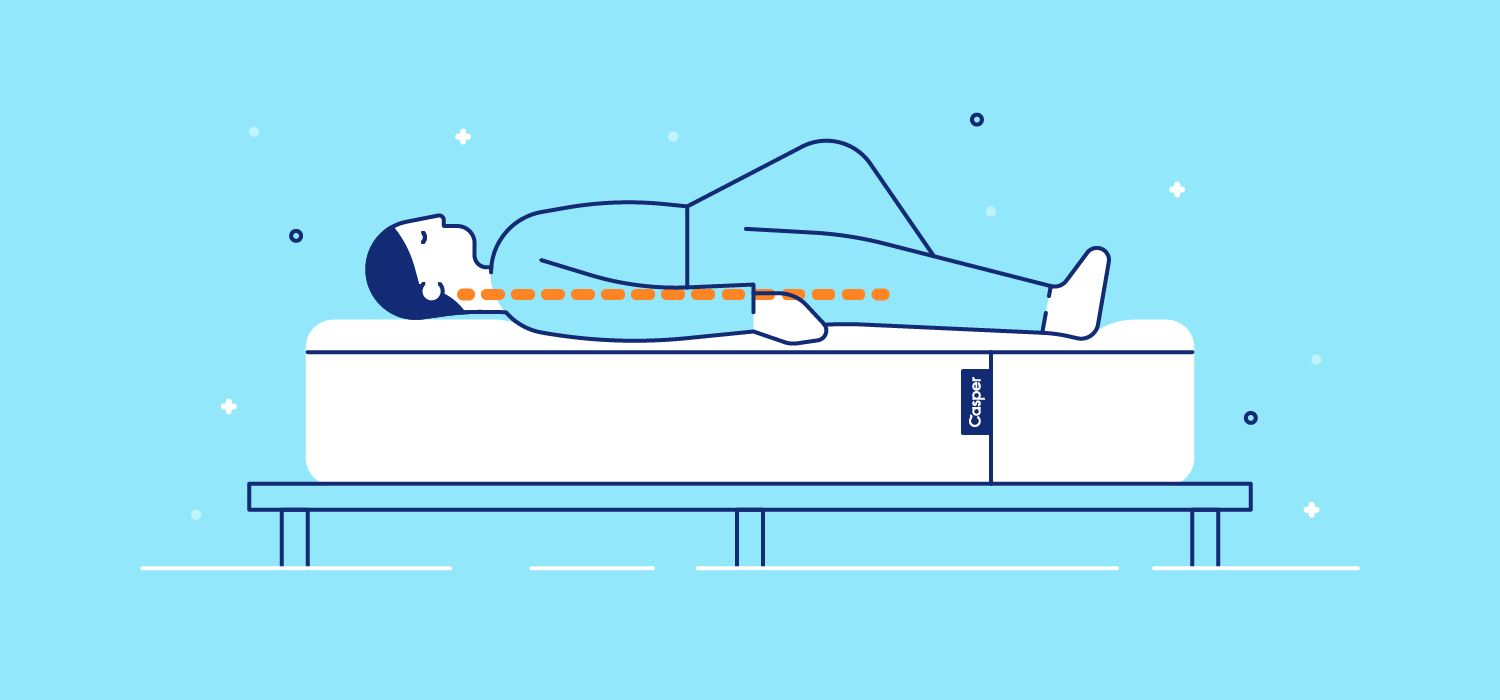
Keeping your spine in the proper position is one of the most important things to keep in mind if you want to learn how to sleep on your back properly. Attempting to sleep on your back on a soft and sinking mattress will cause you to wake up with aches and pains in the morning.
It's important to find a mattress that is firm enough and will keep your spine aligned all night. The Casper Wave Hybrid has supportive gel pods strategically placed under your waist and lower back to help prevent sinking and keep your spine in the proper position. If you don't want to invest in a new mattress, consider buying a firm mattress topper instead.
The Wave Hybrid
Our most advanced mattress. The Wave Hybrid has hyper-targeted support combined with active springs, allow for better airflow.
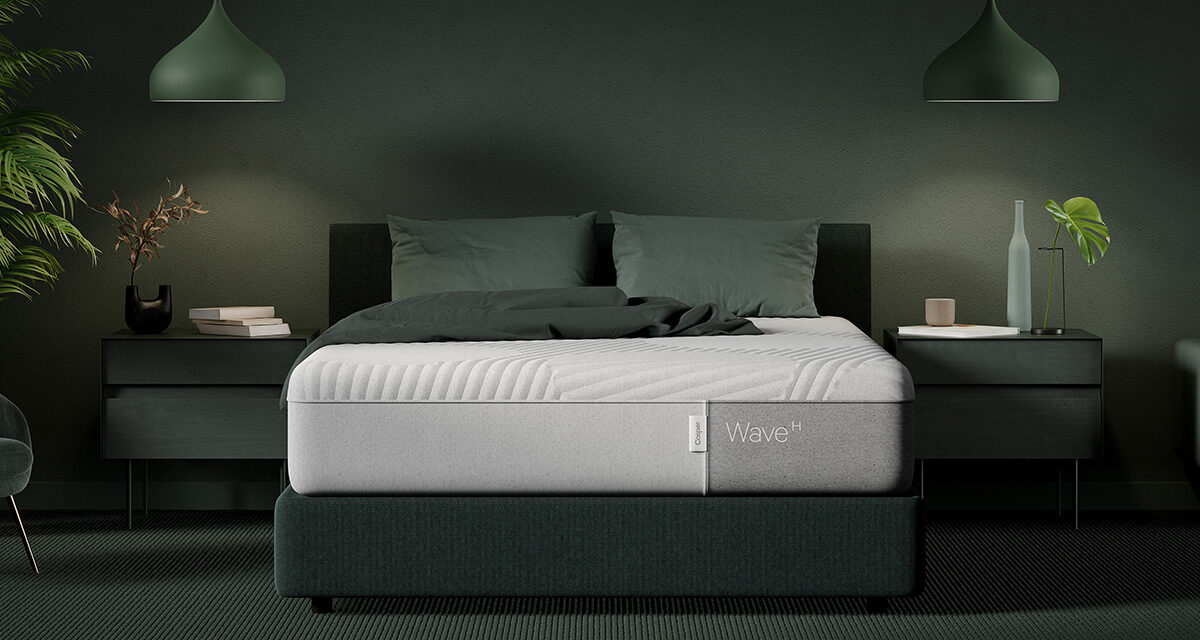
2. Support Your Head and Neck
When you sleep on your back, your hip to knee area, lower back, and neck are what need the most support. Some people like to sleep with several pillows supporting their head and neck, however, it's important that your head is not over-elevated. Your neck should be in a neutral position that supports normal cervical curvature. If your pillow is too high, you will lose the normal curvature of your spine. If your pillow is too low, it will negatively exacerbate your curvature.
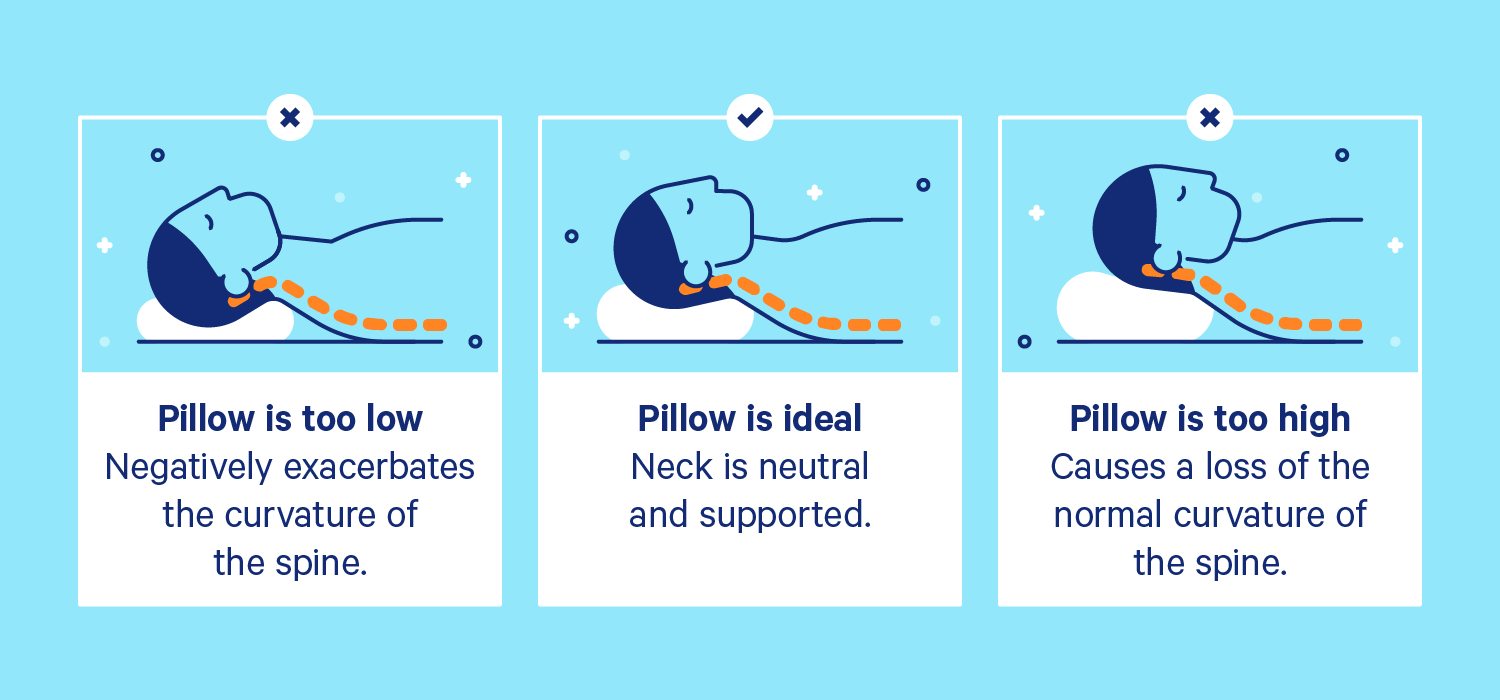
You want a pillow that is going to support your head and keep it in place. Wedge pillows and memory foam pillows are great for head elevation and neck support while sleeping on your back. You can also use a hand towel to support your neck. Just grab a towel and fold it into thirds. Then, pleat the bottom and place the pleated end at the base of your neck. This will fill in that space between your neck and the mattress to give it the support it needs.
3. Place Pillows Under Your Knees and Lower Back
To relieve pressure from your back, many doctors suggest placing pillows under your knees and lower back. This will help reduce strain on your spine and support the natural curve of your back. This will also help keep your muscles and joints in their natural position so you don't wake up feeling stiff.
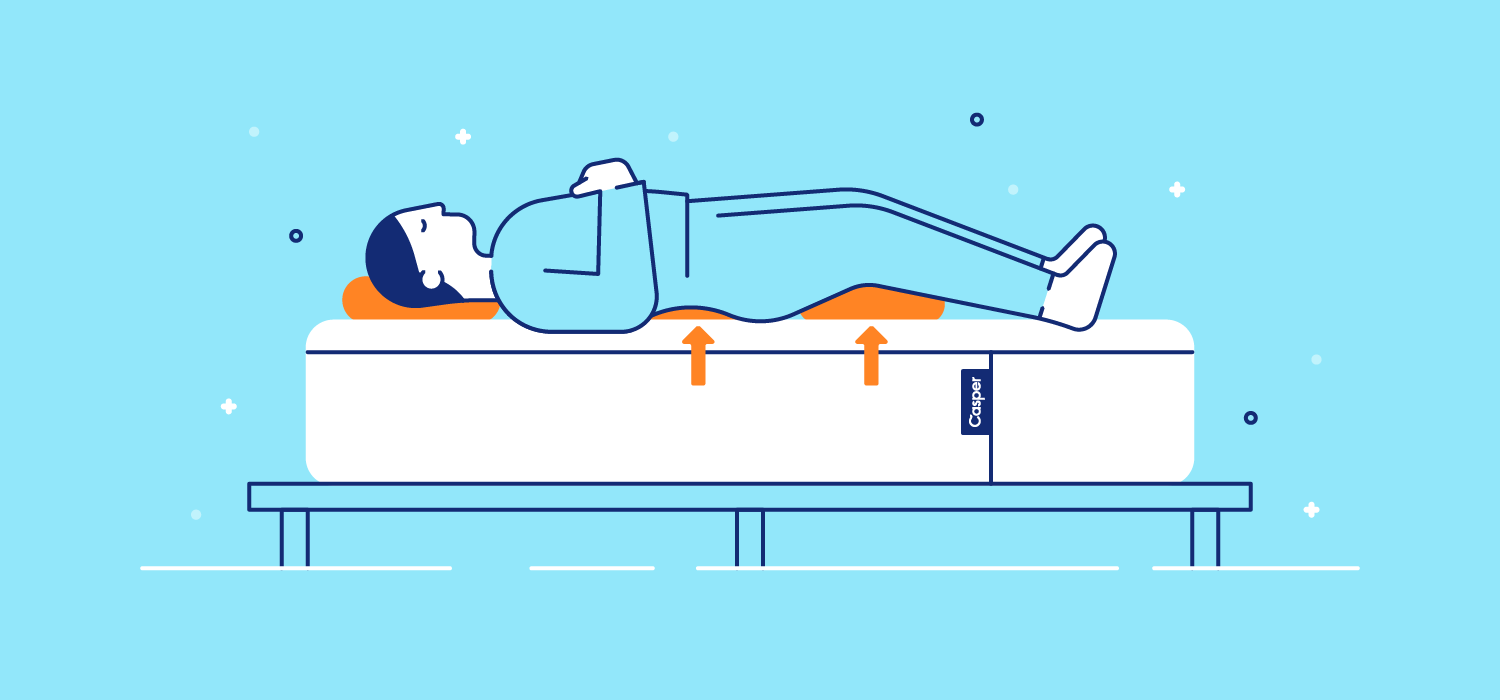
For your lower back, look for pillows that are thin and not too tall. You can also use a hand towel and place it at the small of your back. This should fill in that open space between your body and the mattress and will provide additional support.
For your knees, place one to two regular pillows under your knees. Placing a pillow under your knees will help keep the natural curve of your spine in place. This will also keep your legs from resting too far apart and it will keep your knees and buttocks from becoming too stiff.
4. Stretch Before Bed
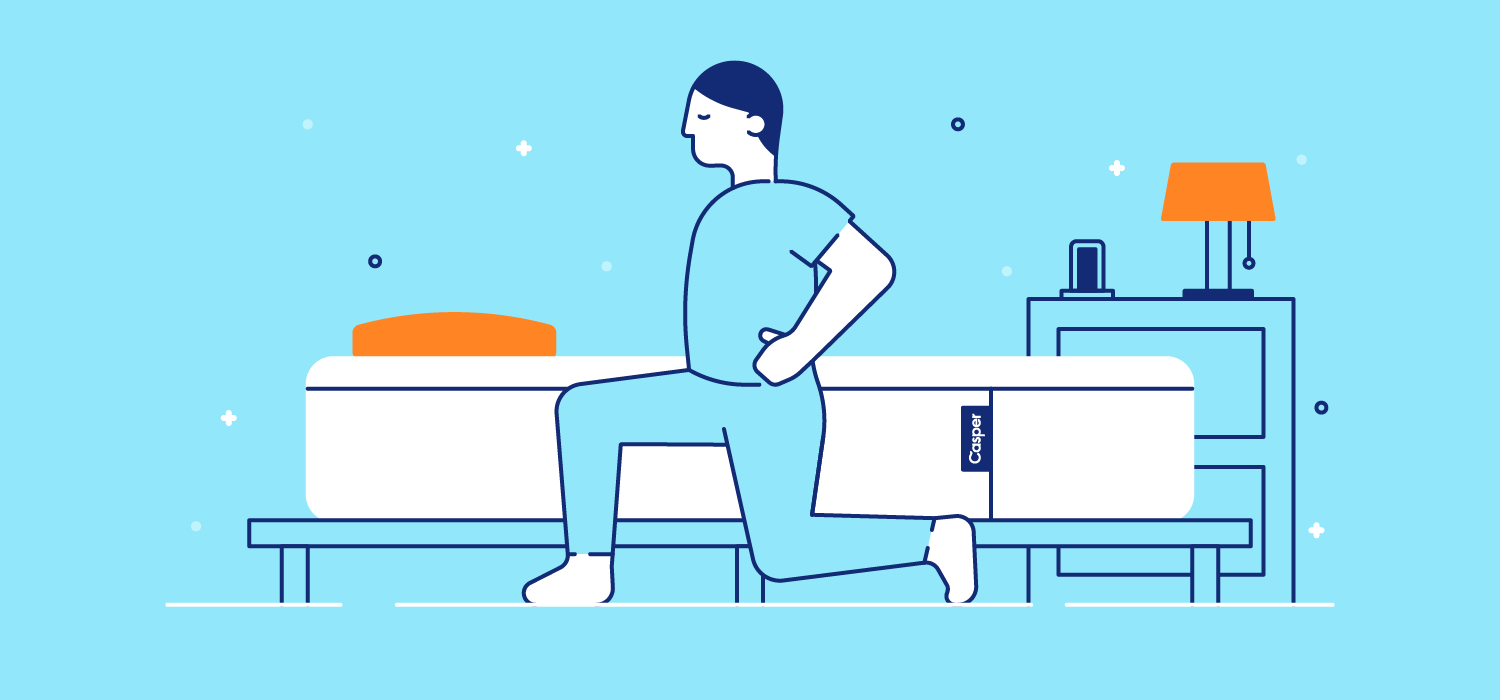
If you have a hard time falling asleep on your back, stretching before bed can help. Stretch about 20 minutes before bed and focus on your legs, back, and neck. This will help improve circulation in those areas while also helping you relax. There are also several yoga poses that can stretch out these areas while promoting sleep. Incorporate a few of these exercises into your nightly routine the next time you want to sleep on your back to help you feel more relaxed and comfortable.
5. Relax With Breathing Techniques

Once you've gotten into the correct position on your back, it can be hard to fall asleep in an unfamiliar pose. One way to make sure you get a good night's sleep is to practice great sleep hygiene during the day. However, if you find that you're lying face-up and still struggling to doze off, practice a few breathing techniques. Exercises such as the 4-7-8 breathing method and three-part breathing technique are great ways to quiet your mind and focus on your breath (rather than your sleeping position).
6. Be Persistent
Trying the above tricks once won't magically make you sleep on your back. It's something you are going to have to work at. You may find that while you fall asleep on your back, you always wake up scrunched in a ball. Instead of getting frustrated, just roll back over. With practice, you will become more comfortable sleeping face-up.
The Benefits of Sleeping on Your Back
As discussed there are so many benefits to sleeping face-up. It's considered one of the healthiest ways to sleep based on the below.
- Great for spine health: Sleeping on your back keeps your head, neck, and spine in a neutral position. This creates less pressure in those areas and will result in you waking up in less pain (if any at all).
- Reduces acid reflux: If you experience acid reflux, sleeping on your back can prevent this. Just make sure you are elevating your head enough; you want your esophagus to be above your stomach.
- Avoids wrinkles and fine lines: While there is minimal evidence, some studies have identified a link between the way you sleep and wrinkles. When you sleep on your side or stomach, your face ends up smashed into a pillow which can cause you to develop wrinkles over time. Sleeping face-up can prevent you from tossing and turning all night and could lower your chances of developing fine lines.
- Less puffy eyes: Sleeping on your back will prevent too much blood from pooling under your eyes while you sleep, resulting in you waking up with less puffy eyes.
- Relieves sinus buildup: If you're sick and are experiencing sinus pain and congestion, sleeping face-up can help with congestion relief. Sleeping on your back with your head above your heart can decrease mucus build-up and will prevent a large amount of blood flow from gathering in your nose.
What Is the Best Sleeping Position?
While there are some sleeping positions that are better than others, there is no one sleeping position that is the best for everyone. The sleeping position that is best for you will depend on the type of sleeper you are and what you're looking to get out of your sleeping position.
For example, those who snore should sleep on their side because sleeping on your back can cause the tongue to rest backward and block your airway. Sleeping on your back is the best sleeping position for people with neck and back pain, but should be avoided if you are pregnant or experience sleep apnea. It's important to remember that the quality of sleep you get is more valuable than the specific position you sleep in. Whichever position gives you the most deep sleep, is the position you should sleep in most nights.
Regardless of the position you sleep in, if you wake up with any sort of aches or pains, take a look at your sleep environment. Does your mattress support your bad back? Does your pillow provide enough cushion for your neck? Ultimately, you should be sleeping in a position that supports you comfortably. Make sure you are properly equipped with a supportive mattress and a huggable foam pillow that promote healthy spinal alignment.
How To Draw A Person Lying Down On Their Back
Source: https://casper.com/blog/how-to-sleep-on-your-back/
Posted by: curtisyouper.blogspot.com

0 Response to "How To Draw A Person Lying Down On Their Back"
Post a Comment